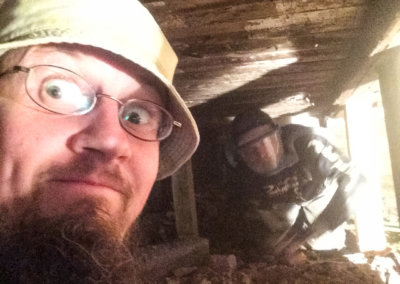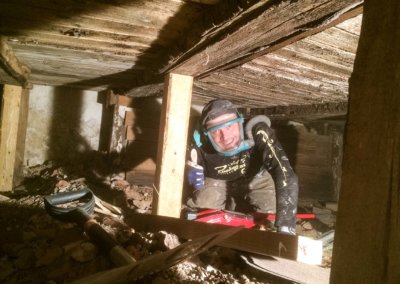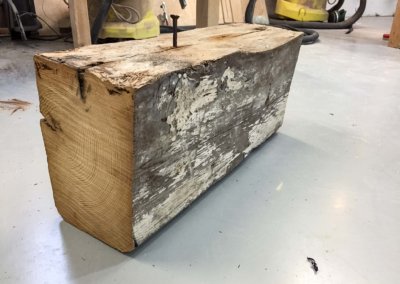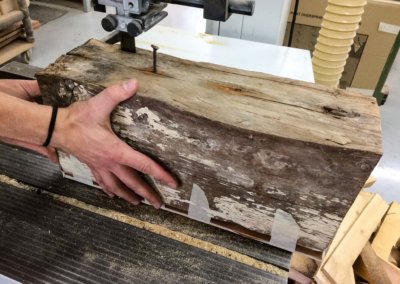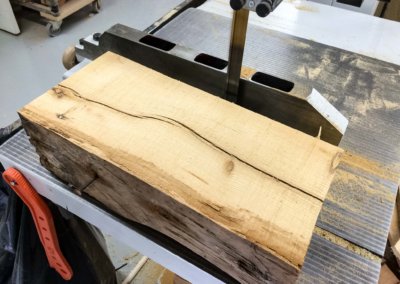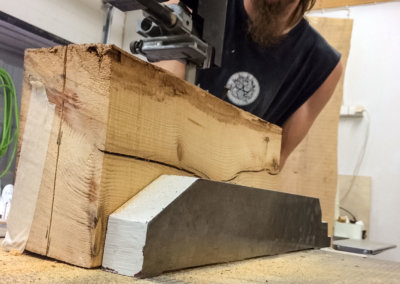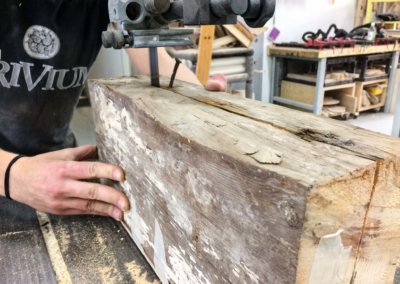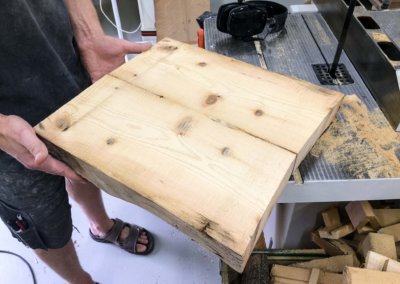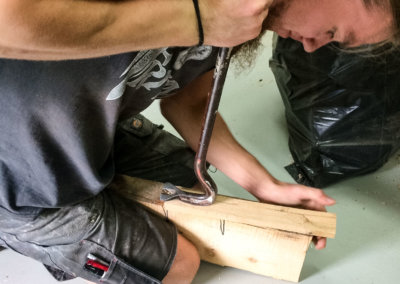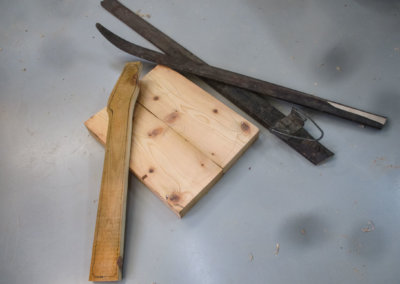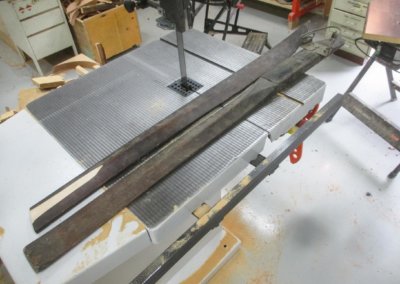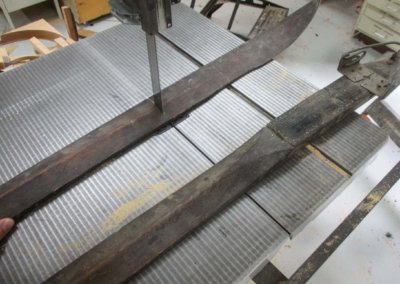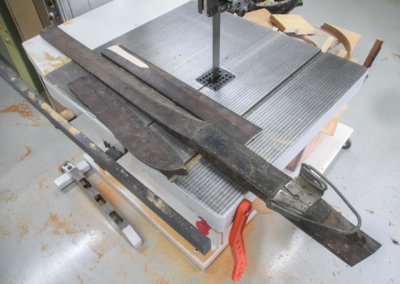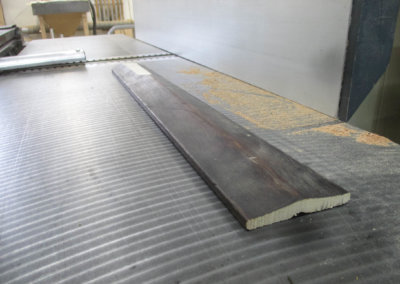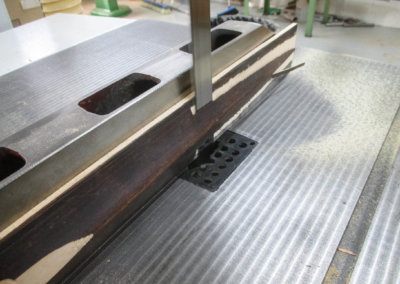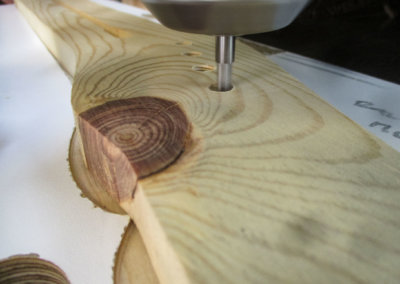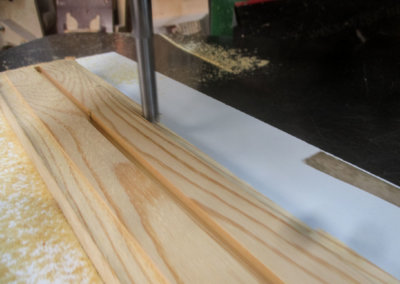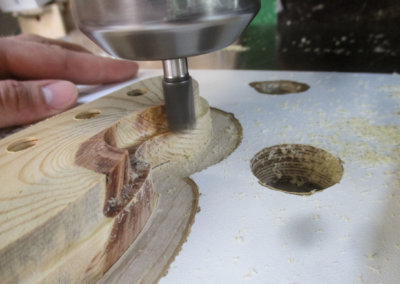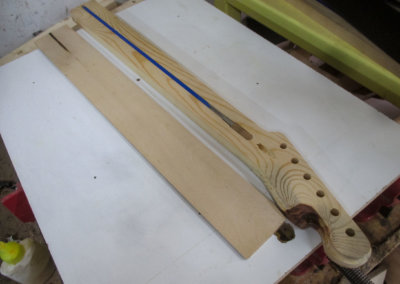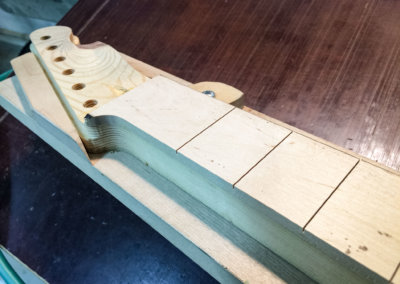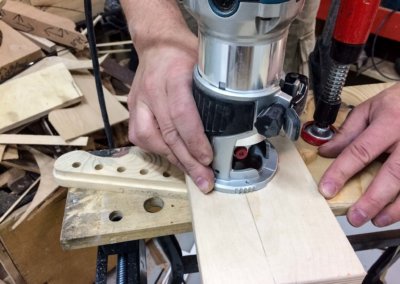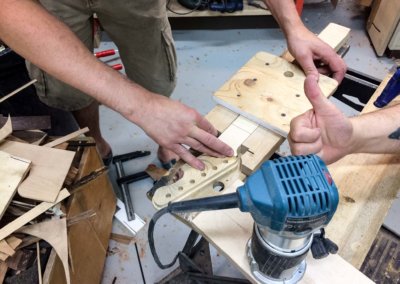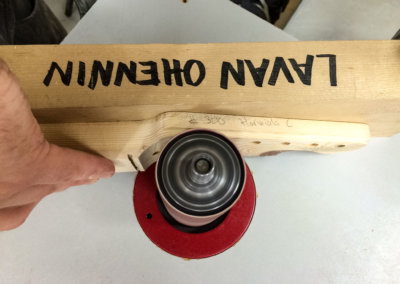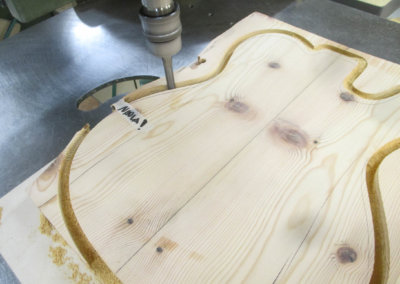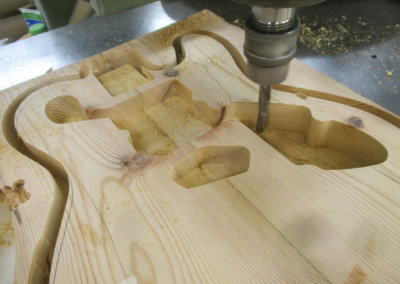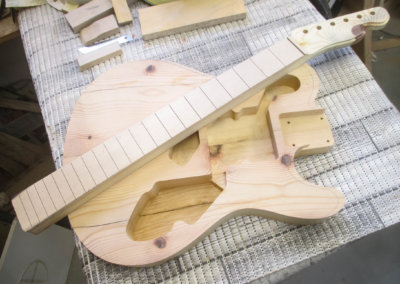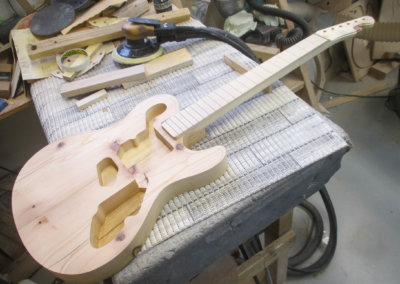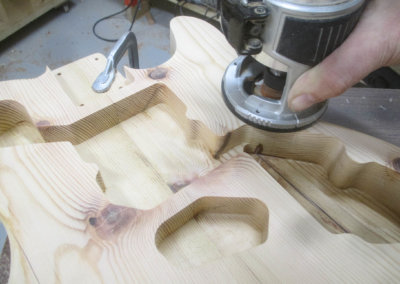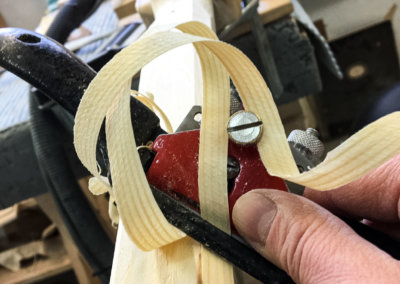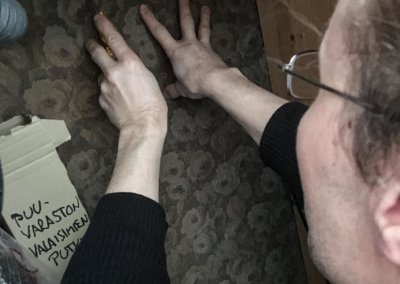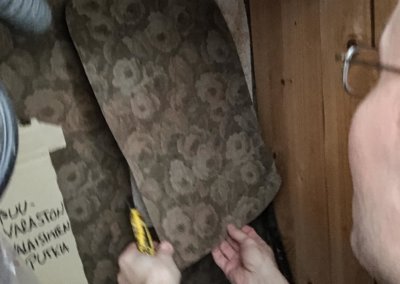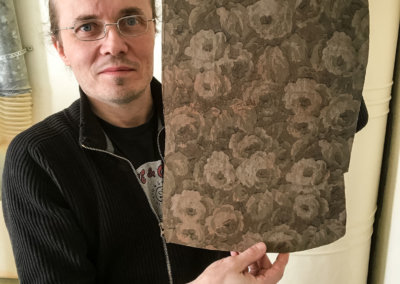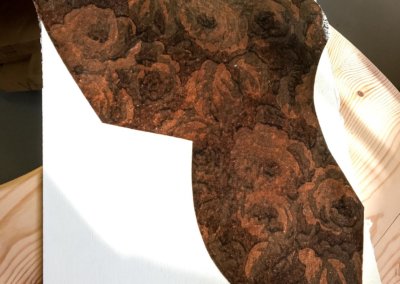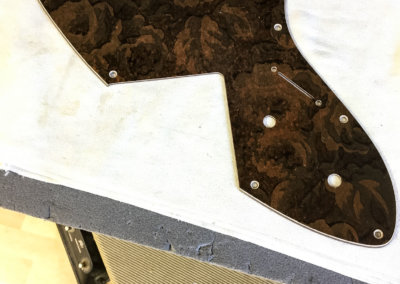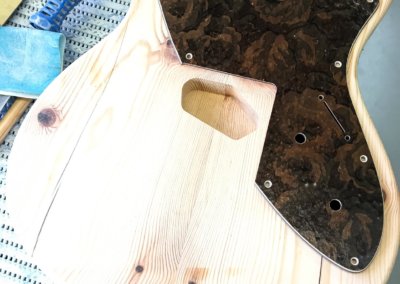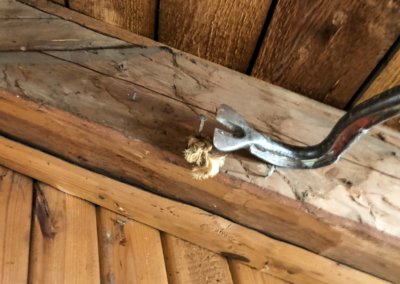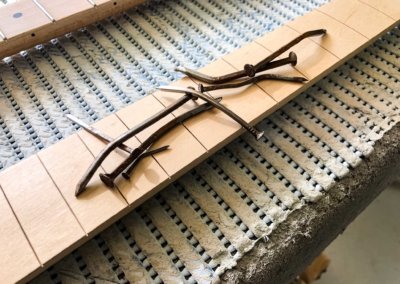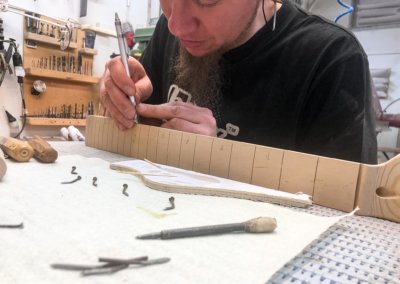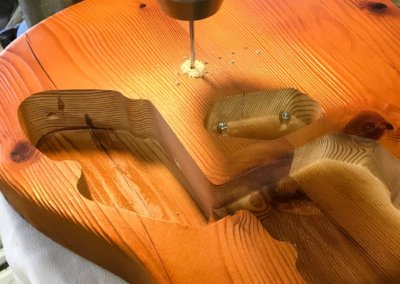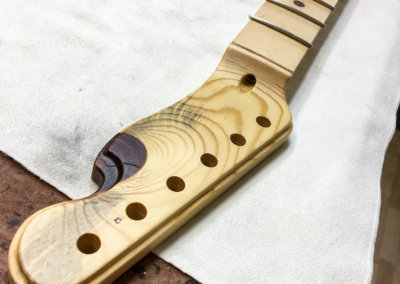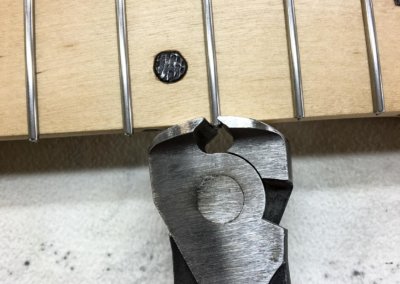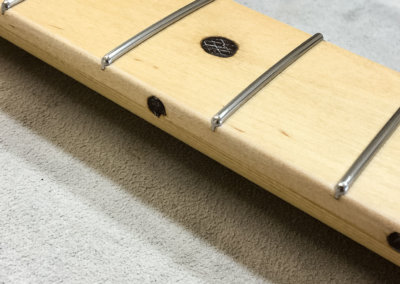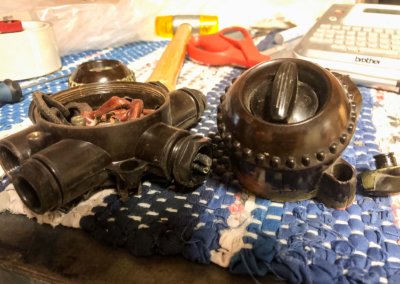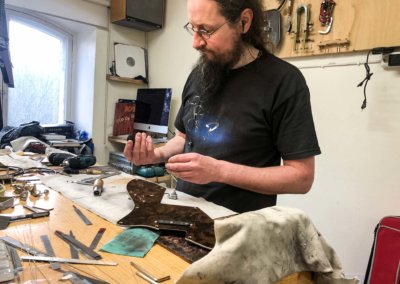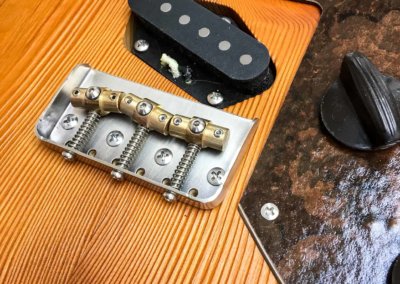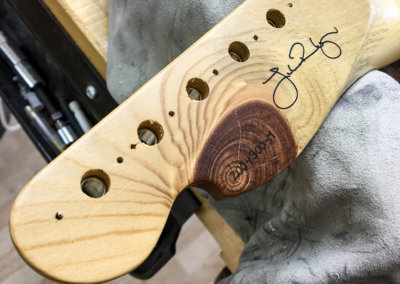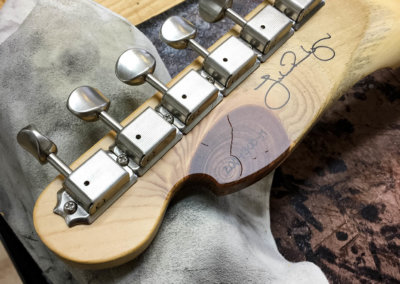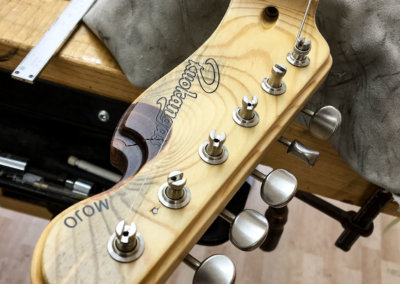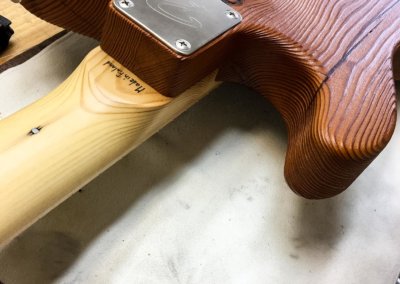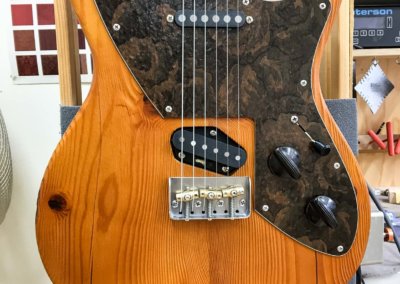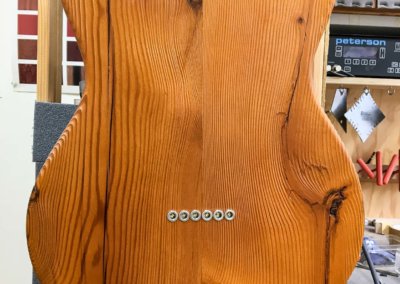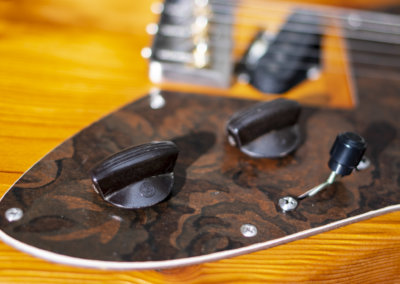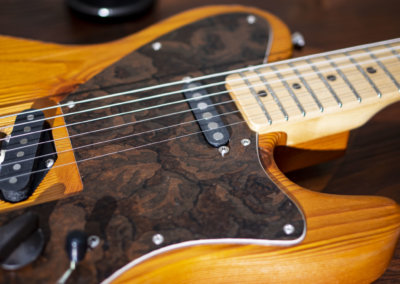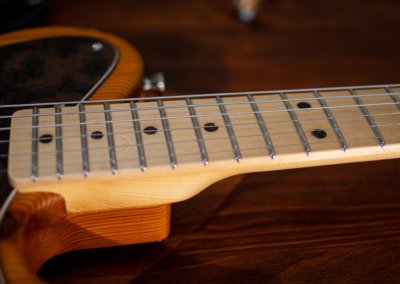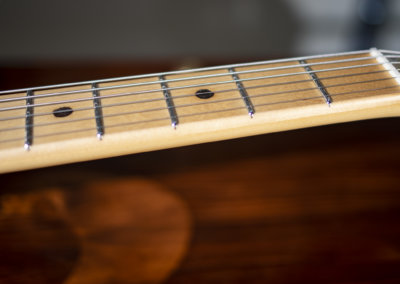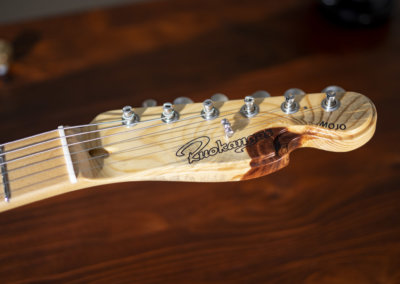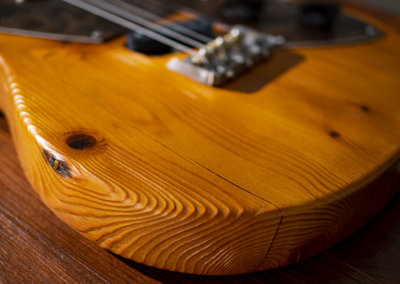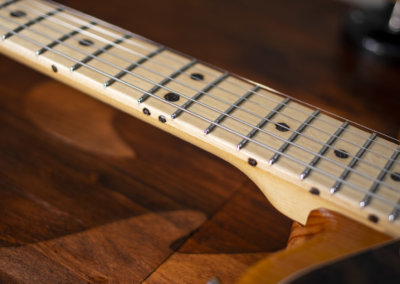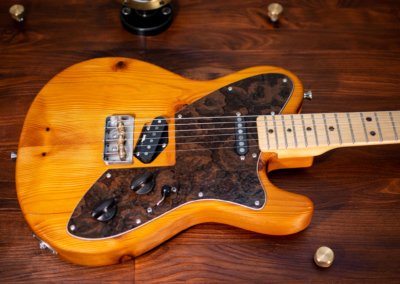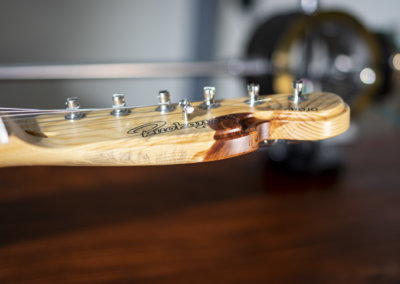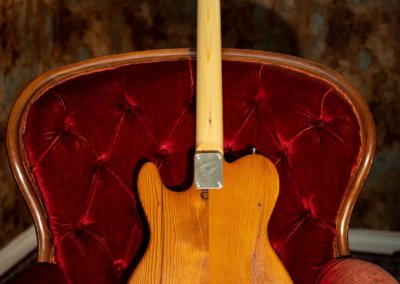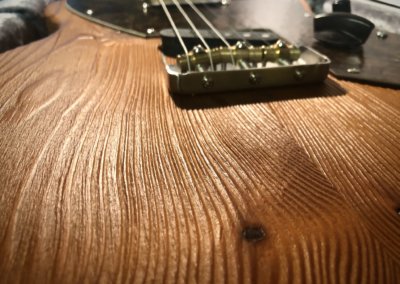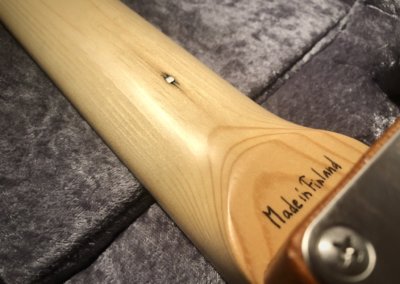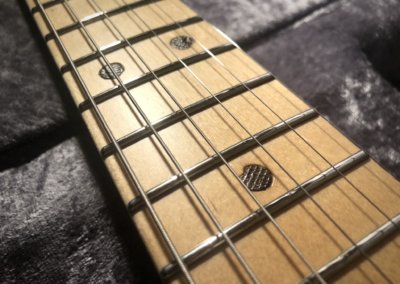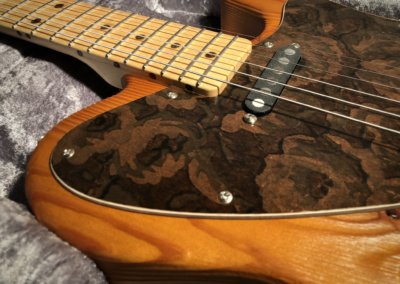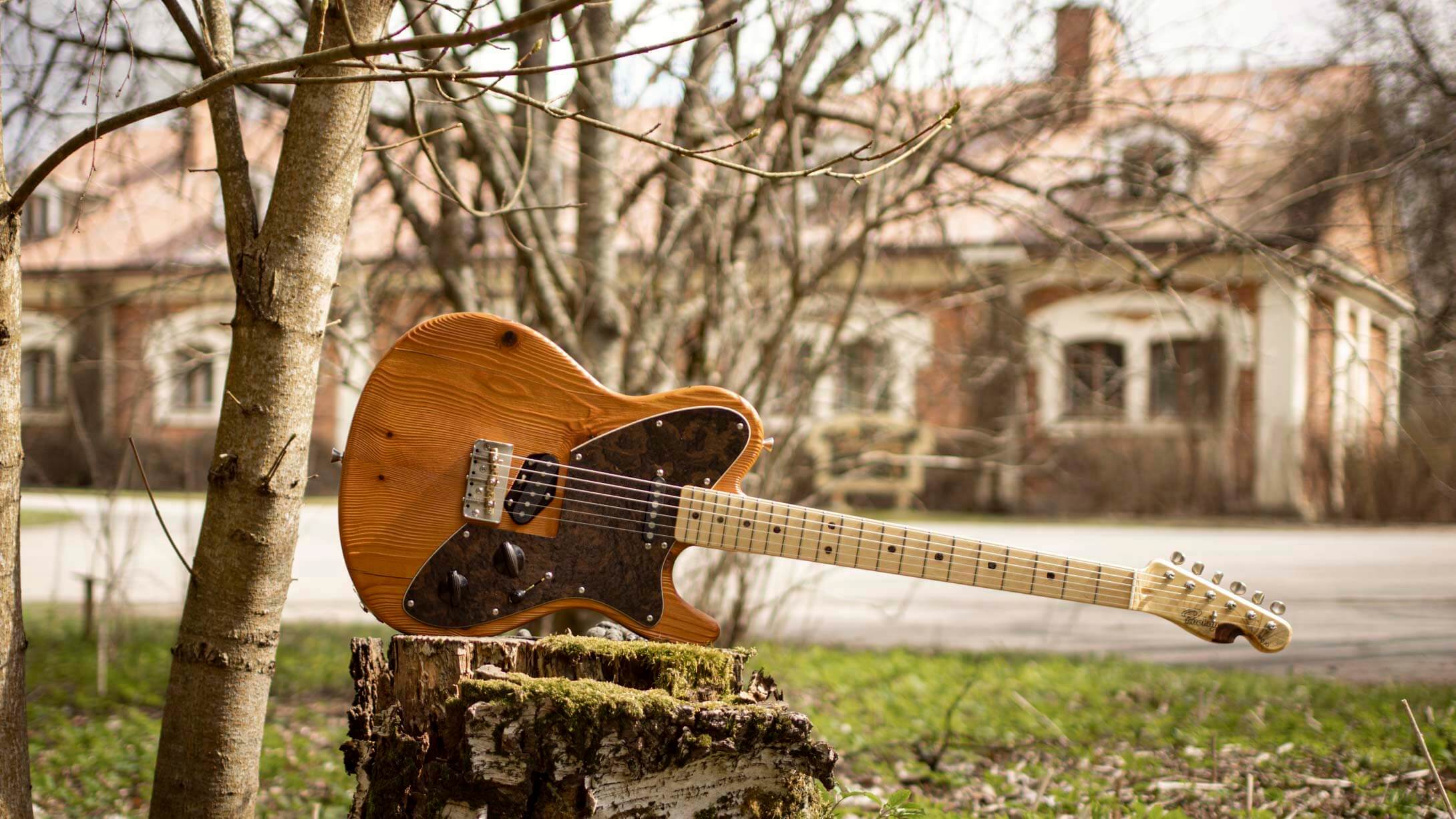
ECHOES FROM A TIME LONG GONE
Moving to Harviala Manor
We bought the old Harviala Manor – or Harwiala, as they spelled it back in the day – stable building back in 2011, and faced a massive renovation project in order to transform the rooms suitable for our guitar workshop needs. The overhaul included strengthening certain floors, taking down walls and parts of ceilings, amongst a million other tasks. During the process, we were able to salvage some old wood materials that we hoped to use one day in some special guitar project.
Mojo #300
Years later, I noticed that the Mojo serial #300 was closing in, and mentioned this to my team. The idea of using these reclaimed wood materials in this specific guitar – the Mojo #300 – started brewing…
The Reclaimed Wood Challenge
The opportunity to kick the project further and to give it a clear focus showed itself in the form of The Holy Grail Guitar Show 2020 Reclaimed Wood Challenge. We eagerly signed up, and continued working on the instrument.
Old scrap… or historic artefacts?
Our aim was to focus using as much as possible those materials found from our historic workshop building – such as a pine beam cutoff from under our wood storage floor (the body of the guitar!) – a crazy tight and straight grained ceiling board (the neck!), also pine, taken down from the attic when installing our spray booth fans – an old cross country Finnish army ski made of birch (the fretboard!) we found from the cellar – an old wallpaper (the pickguard!) that we discovered from inside a closet wall in our buffing room – or the rusty nails (the fretboard dots!) I saved during the long renovation years.
THE STORY OF THIS GUITAR
A NEW PURPOSE
Est. 1896
This guitar literally breathes the history of Harviala Manor and one could say that in some regard the making of this guitar began all the way back in 1896, when the Harviala Manor stable was built.
For me, the hopeless romantic that I am, I see here a beautiful narrative arc.
The house with a voice
This building was constructed at a time when literally everything was as hand made as it could ever be. Every beam under the floor and up in the roof shows axe marks – carved to shape by hand. And now, 120 years later, a bunch of long-haired hippies move in, restore the building that has stood deserted for years. They find old bits and pieces of the house, artefacts that once had a purpose but then were tossed away. They carefully salvage the findings – and give them a new purpose by sculpting them into a musical instrument.
And so – after all the history the house has seen – after all these decades, the house finally has a voice. The house can now sing its own tune through this instrument.

